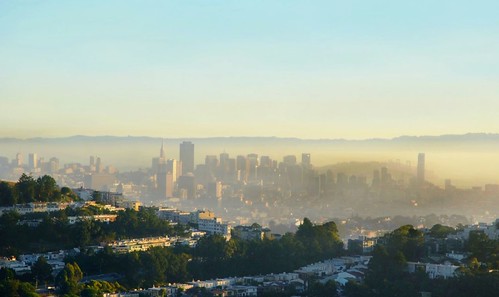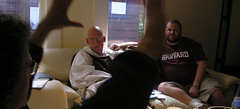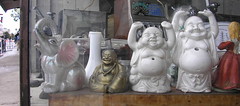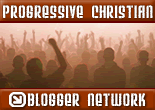A Psychogeography of San Francisco

San Francisco stretches in a curve under a sky the color of salmon: the bright western dawn that Caspar David Freidrich so loved. The sky interpolates a you: you had to be here to see it, writes Joseph Koerner. On a heroic January morning, it’s hard to look out over that pink, clear sky and not inhale with a whiff of emotions rising.
Some of that information is mine alone. I’m staying in a friend’s apartment, partaking of a view of the Mission District Grid from the south, a thousand three-story workers’ apartments reflecting white roofs. This is the view I used to jog every morning in grad school. I used to jog past the houses of small-time rock stars and local documentarians, past the overgrown garden where old hippies gave away avocados, past the friary where Franciscans fed soup to the homeless, the bar where I’d fallen asleep with the arm of a novelist around me, the alleyway where my best friend had read my tarot cards. The city was a map of emotions; walking it from the level of a sidewalk, I could run into the ghost of a painful argument at any time. But above, with the dog-park and the other joggers, I’d feel those labyrinths of experience falling away into another view. I’d look out at a city of people I’d argued with, fought against, cried with, feeling it all slip below me, a system distinct from me, separable, whose many stories remained accessible but also distant.
That hill is my spiritual cleansing. This bright January morning, it still has the power to put me back from immediacy, and fear trickles down away from me to the valley below. Any hilltop view in San Francisco gives me this feeling of levity, freedom, and abstraction. Some of that cleansing power of the city is mine, the after effect of a ritual I practiced every day for years, now ingrained in memory. The map of encounters and romances, of personal narratives woven into particular alleyways are mine; the view, the attitude, the adjustment, are each a creation of personal experience are also. Both are rituals of a personal narrative, both relics of the way I lived when I lived in this city. Standing on the hilltop, I might even mistake what I see in the city for my own experience, but in truth, most of it is not.
The rose-colored sky is itself inherited; we borrowed it from the nineteenth-century golden dawn painters who saw sunrises over Swiss forests. I see the city through the eyes of nineteenth-century investors and artists, I see Jack London’s Oakland, I see the broad-shouldered laborers depicted in WPA murals from the 1930s. Struck by the whiff of freedom beneath the California stars last night, I cough language borrowed by Woody Guthrie from the throat of Muir, who parsed Thoreau and Rousseau into American dialect.
The grid that stretches before us is administered by a dozen different invisible agencies which enforce the socio-economic pattern of the rich on the hillsides and the poor in the valley. That grid was the product of mapping by state and capital: by investors, affiliated with the railroads, who laid down the shape of a city to be; three different grids, torqued at different angles, by three different companies who began to plan from the east and west and south of the pinensula at different times. The maps were adopted by state authorities, who used them to see where to send trolley-car lines and water pipes, and by banks, who used them to guess where whites lived (and where to make loans) and where lived others (where to deny them).
The horizon is mountains dotted with houses, then sky: the border where this landscape ends. I’ve just come, this time, from the other side of those hills, and I’m aware in every conversation I have in San Francisco about the limits of the world view here. If Midwestern chemtarails are real, and the people of San Francisco where the activists are don’t know about it, they’ll never write about it to change it. Katrina struck the rest of the country more deeply. Gaza rings more loud. There are privileges associated with that world-view: every conversation I have here will flow easily into recycling, spirituality, and altnerative healing, where I’d have to scrimmage to claw at such ideas or people in the Midwest. The anti-Israel protest swings by, two hundred men and women of all ages and ethnicities, some with banners from the Episcopalian church and some of them Jews against Zionism, and one feels an uplift of possibility, of small social movements forming, demanding peace, wondrous to be in San Francisco now, ground zero for social utopianism. But there are limits. That parade, like the anti-war rallies against Bush in the 2000s, will never be covered outside of local news. Almost all the social movements launched here die before they cross those hills. Like the land of Oz, we’re surrounded by an impassable waste on every side, crossed only by natural disaster and magic slippers.
Landscape is the single most important tool mankind has for keeping information away. The developer who practices unwise investment strategies to the risk of investors has only to hide those properties over the horizon. Diamond miners with unscrupulous attitudes towards unions had only to practice their trade in Africa. Conducted in plain sight, within the sphere of everyday interactions, conspiracy and murder would never pass; there in another world, they become everyday affairs. Landscape, a system of boundaries and limits to vision, conspires with corruption.
This world is greater than me, my personal world being shaped by the map of a city created by distant administrators a century ago; even my sense of light, my preference for a certain kind of café with its French tables ranging the sidewalk and doors the length of the bar thrown open, the reflection of other cafes, cultivated by French bohemians now dead, documented, popularized, digested, recreated, so that I and other would-be artists could congregate there. I live in a city where three-fourths what I see is a relic of someone else’s glasses, someone else’s blueprints, someone else’s election.
To decode this world, I need not only politics but also aesthetics and philosophy; it is not merely the laws that govern loans and taxes that shape this world, but also preferences for beauty, imitated and disseminated. By landscape I mean that system of boundaries, conjoined, overlapping, self-perpetuating, invisible, and unavoidable, which subsist in space and structure my experience. The boundaries interpolate and imbricate each other; they’re mistaken for each other, like when I think that I have personally struggled to become more free because I live in San Francisco where the natives chant the history of civil rights all the time. The boundaries are some very old and political, like the angled route of Mission Street, once the Camino Royale, which runs past the site of the old mission of Saint Francisco di Asis all the way south to Mexico City; and some of them are as recent as the fluctuating line of gang warfare on 22nd street, or the invisible boundary around Chaim’s house, which makes me think in lines from Bob Dylan and Rimbaud whenever I cross 14th towards Natoma. Landscape is all the boundaries, personal and political, inscribed on the horizontal world by the accretion of time.
Labels: grid, history, landscape, landscape studies, place, psychogeography, san francisco










0 Comments:
Post a Comment
<< Home